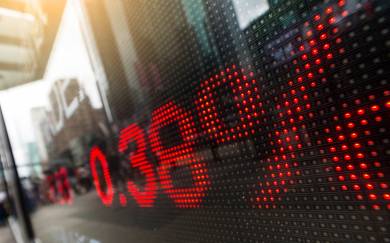Bank Of Canada (BoC) And ECB Interest Rate Expectations | Redundancies Of 4,000 Employees At Philips

Saxo Bank 24.10.2022 12:51
Summary: Equities snapped back higher Friday to close the week on a positive note and near the highs for the week, perhaps as the persistent rise in US treasury yields finally reversed sharply intraday on Friday after posting new cycle highs. The positive mood carried over into the early Asian session overnight as yields fell further, but sentiment has soured again slightly ahead of the open of the European session today. The Japanese yen weakened after Friday’s wild rally from new multi-decade lows, a move that was likely intervention-driven. The week ahead will feature earnings reports from the largest US megacaps.
What is our trading focus?
Nasdaq 100 (USNAS100.I) and S&P 500 (US500.I)
Strong equity session on Friday with S&P 500 futures closing at a weekly high and this morning the index futures briefly pushed above the 3,800 level which is quite startling given the price action out of China. Many of the large US companies have considerable revenue exposure to China, so there is a downside risk here to US companies as the increasing political risk premium on Chinese equities could impact valuation on US companies with large Chinse exposure. The falling US 10-year yield likely driven by safe-haven seeking flows is offsetting at the margin some of the headwinds for US equities, but the medium-term outlook remains negative. It is also a massive earnings season week in the US with most of the mega caps reporting earnings, so volatility could easily pick up during the week in the event that these earnings surprise to the downside.
Hang Seng (HK50.I)
In light of the events over the weekend in China with Xi Jinping drawing up a new leadership in China (see more in-depth analysis below), the Hang Seng Index is selling off 6.4% to price levels seen as far back as 2005; in the total return basis is not quite as bad. The equity valuation on Hang Seng Index has fallen to less than 8 on 12-month forward P/E ratio suggesting that a steep political risk premium is being built into Chinese equities. Chinese mainland shares are down 3.2% during the session likely reflecting the divergence in foreign ownership.
Wild ride for JPY traders Friday, likely on intervention
The yen spiked further to the downside as global bond yields continued to rise Friday, with USDJPY nearly reaching 152.00 before what may have been a powerful intervention from official Japanese sources took USDJPY as far south as sub-146.50 levels on Friday as bonds also found support. Japan’s finance minister Shunichi Suzuki said that the country is in a showdown speculators and can’t tolerate “excessive” moves in the JPY. The action has sprung back overnight, taking USDJPY back to the 149.00 area in early European trading today. Other USD pairs have moved in sympathy with the wild volatility in JPY, with sudden USD weakness late Friday following through in places overnight but reversing later in the session. Elsewhere in FX, sterling is bid on hopes of an orderly transition to a new prime minister, most likely Rishi Sunak.
Crude oil (CLZ2 & LCOZ2)
Crude oil has given back some of Friday’s weaker-dollar-driven gains as fears over the global economic outlook continues to offset OPEC+ production cuts and EU sanctions on Russian oil flows from early December. A batch of delayed economic data out of China and President Xi tightening his grip on the country also helped sour sentiment at the start of a new week. Overall, however, the oil market judging from the bullish curve structure remains tight signalling no easy path for those looking for lower prices. Focus this week on earnings from Exxon, Shell and their Big Oil peers.
HG Copper trades near resistance in the $3.5lb area
... following an end of week rally that was triggered by a weaker dollar and softer yields (see below). A batch of data released by China overnight saw copper imports reach their second highest level this year and despite the current property market crisis, the metal is seeing rising demand in order to replenish low stock levels and from clean energy production which is taking hold even as China’s broader demand for commodities have seen a slowdown due to lower economic activity. Speculators have traded copper from the short side since April, and a break above $3.70 is likely to be the minimum requirement for that to change.
Gold (XAUUSD)
Gold reached $1670 overnight as Friday's rally extended into the Monday session, and apart from speculation about the timing of a peak-and-reversal in US treasury yields, it is the current wild ride in USDJPY that has got the algo’s going wild in both directions. While we maintain our long-term bullish view on gold and silver, the price action has yet to confirm a reversal. This despite the second failed attempt last week to break lower through key support at $1617. The exodus from bullion backed ETFs has gathered pace recently as investors instead focus on increasingly attractive bond market yields. Gold will likely continue to trade in a choppy fashion until we reach peak hawkishness and/or the dollar starts to weaken.
US treasuries (TLT, IEF)
US treasury yields spiked further on Friday, with the 10-year treasury yield benchmark posting a remarkable 4.33% before treasuries finally found strong support, closing the day slightly below the prior day’s close of 4.22% and following through to 4.16% in early European trading today. Could this prove a climax peak-and-reversal in yields? We would need to see the yield work back down below 4.00% for a stronger indication. Noted “Fed whisperer” Nick Timiraos of the Wall Street Journal penned an article at the weekend suggesting that the Fed is preparing for a downshift in the pace of rate hikes by early next year (more below). US 2-year yields are also sharply lower from the Friday highs, having fallen some 20 basis points and trading near 4.43% this morning.
What is going on?
China’s Communist Party’s new leadership
China’s General Secretary Xi lined up a team who deeply share his vision of the future of China and the blueprint of the governance model and development strategies that he had established to replace four of the seven members of the Chinese Communist Party’s Politburo Standing Committee, including Li Keqiang, Premier. The strategies of common prosperity, high-quality development, dual circulation, technology self-reliance, strengthening governance within the CCP, and deepening CCP’s leadership over all aspects of the country will continue.
WSJ’s Nick Timiraos suggests the Fed is eyeing a slowdown in its pace of tightening
Timiraos is widely considered to have solid access to Fed sources and in a piece released this Saturday, affirms the market view that the Fed may begin to downshift from the 75-basis point hike pace, perhaps already after the November meeting and eventually pause the tightening regime at some point early next year to offer time to assess the impact of the rapid pace of rate hikes, which took the Fed Funds rate from 0-0.25% as late as March of this year to a projected 4.25-4.50% after the December meeting. But he also notes the variety of opinions among Fed officials, some of whom are in favour of carrying on with the current pace of tightening and not wanting to signal any change in resolve as long as inflation persists anywhere near current levels.
Philips in urgent restructuring laying off 4,000 employees
The Dutch industrial conglomerate has been a mess for years and this morning the company is reporting revenue and EBITDA in line with estimates, but announcing a big restructuring of the company laying off 4,000 employees to improve profitability ahead of what the company expects to be more challenging times.
What are we watching next?
Former UK Chancellor Rishi Sunak may become next UK Prime Minister today
Former PM Boris Johnson announced at the weekend that he will not run for leadership of the conservative party. The deadline to announce support from at least 100 Tory lawmakers is today at 14:00 UK time, with the only challenger to Sunak’s bid Penny Mordaunt, who may not have sufficient votes. Sunak has over 100 backers and will automatically become the next Prime Minister if Mordaunt can’t muster sufficient support for a run-off.
Bank of Canada and ECB set to hike by 75 basis points this week
On Wednesday, the Bank of Canada (BoC) is expected to hike interest rates by as much as 75 basis points, taking the policy rate to 4.00% if they do so, after a hotter than expected CPI print in September for Canada. On Thursday, the European Central Bank (ECB) will also further tighten its monetary policy to fight against widespread and persistent inflation. We think that the ECB will have no other choice but to send a hawkish message to the markets (meaning a 75-basis point interest rate hike) and signal further hikes to come, at least until February 2023. It is likely that the central bank will downshift interest rate hikes in December 2022 and in February 2023 to take into consideration the ongoing economic slowdown (which may end up in a recession). At this week’s meeting, the ECB governing council will also discuss two other matters: 1) Quantitative tightening and when/how it should start. But a final decision is not expected until December; 2) commercial banks’ early repayment of TLTRO (for Targeted Longer-term Refinancing Operations to provide financing at very low rates to credit institutions). Those two points are unlikely to be major market movers.
Further pressure on Japan’s yield curve control?
Last week, the Bank of Japan (BoJ) was forced to start emergency bond buying operations to maintain its yield curve control (YCC) policy. Pressure could remain high this week again. Several factors are pushing yields higher in Japan: highest inflation print since 1991, calls for very large wage increases and the continued upward migration in global yields, of course.
Earnings to watch
Around 430 earnings releases expected this week in the earnings universe that we cover during earnings seasons. Out of those more than 400 earnings releases, the most important ones are highlighted below. By the end of this week, we will have an adequate view into revenue growth, operating margin, and earnings growth on a both q/q and y/y basis.
Today: Nidec, Philips, Cadence Design Systems
Tuesday: First Quantum Minerals, Canadian National Railway, DSV, UPM-Kymmene, SAP, HSBC, ASM International, Norsk Hydro, Novartis, UBS, Kuhne + Nagel, Microsoft, Alphabet, Visa, Coca-Cola, Texas Instruments, UPS, Raytheon Technologies, General Electric, 3M, General Motors, Valero Energy, Biogen, Enphase Energy, Halliburton, Spotify Technology
Wednesday: Dassault Systemes, Mercedes-Benz, BASF, Deutsche Bank, PingAn Insurance, CGN Power, UniCredit, Canon, Barclays, Standard Chartered, Heineken, Aker BP, Iberdrola, Banco Santander, SEB, Meta Platforms, Thermo Fisher Scientific, Bristol-Myers Squibb, ADP, Boeing, ServiceNow, Ford Motor, Twitter
Thursday: ANZ, Anheuser-Busch InBev, Argenx, Shopify, Teck Resources, Neste, Kone, TotalEnergies, EDF, STMicroelectronics, PetroChina, China Life Insurance, CNOOC, Oriental Land, Shin-Etsu Chemical, Takeda Pharmaceuticals, Hoya, FANUC, Shell, Lloyds Banking Group, Universal Music Group, Repsol, Ferrovial, Hexagon, Evolution, Credit Suisse, Apple, Amazon, Mastercard, Merck & Co, McDonald’s, Linde, Intel, Honeywell, Caterpillar, Gilead Sciences, Pioneer Natural Resources
Friday: Macquarie Group, OMV, ICBC, China Merchants Bank, LONGi Green Energy Technology, Midea Group, Imperial Oil, Danske Bank, Sanofi, Airbus, Volkswagen, China Construction Bank, Agricultural Bank of China, Bank of China, BYD, China Shenhua Energy, Eni, Keyence, Hitachi, Denso, Equinor, CaixaBank, Wilmar International, Swiss Re, Exxon Mobil, Chevron, AbbVie, NextEra Energy, Colgate-Palmolive, Royal Caribbean Cruises
Economic calendar highlights for today (times GMT)
0715-0800 – Eurozone Oct. Flash Manufacturing and Services PMI
0830 – UK Oct. Flash Manufacturing and Services PMI
1230 – US Sep. Chicago Fed National Activity Index
1345 – US Oct. Flash Manufacturing and Services PMI
Follow SaxoStrats on the daily Saxo Markets Call on your favorite podcast app:
Apple
Spotify
PodBean
Sticher
Source: https://www.home.saxo/content/articles/macro/market-quick-take-oct-24-2022-24102022
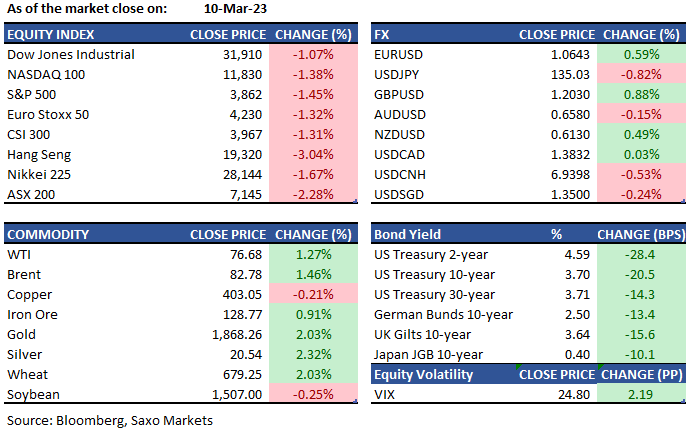

 TeleTrade Comments 17.10.2022 08:47
TeleTrade Comments 17.10.2022 08:47

 ING Economics 18.10.2022 11:00
ING Economics 18.10.2022 11:00
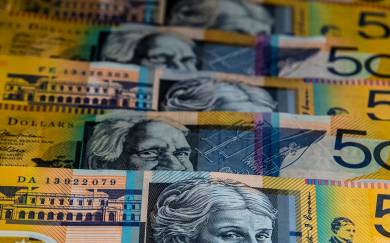
 Craig Erlam 18.10.2022 12:45
Craig Erlam 18.10.2022 12:45



 InstaForex Analysis 20.10.2022 11:48
InstaForex Analysis 20.10.2022 11:48


 Saxo Bank 21.10.2022 09:46
Saxo Bank 21.10.2022 09:46




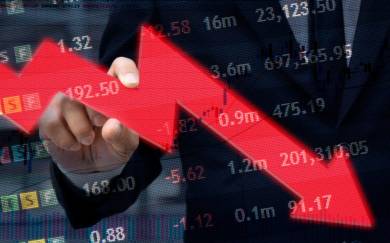


 Kamila Szypuła 28.10.2022 11:48
Kamila Szypuła 28.10.2022 11:48
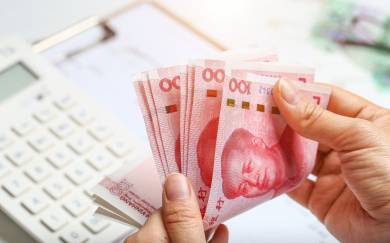


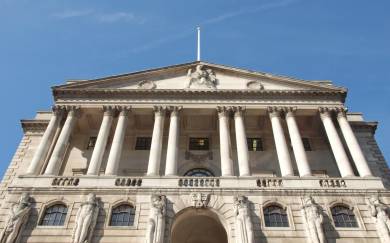











 Conotoxia Comments 29.11.2022 13:24
Conotoxia Comments 29.11.2022 13:24













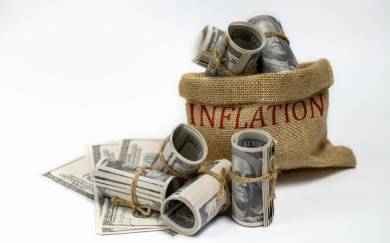

 Torben Melsted 05.01.2023 08:23
Torben Melsted 05.01.2023 08:23


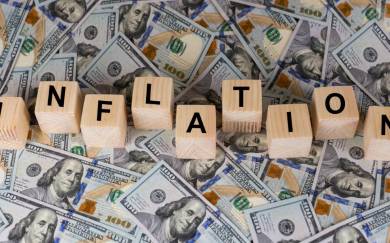

 Franklin Templeton 14.01.2023 09:33
Franklin Templeton 14.01.2023 09:33











